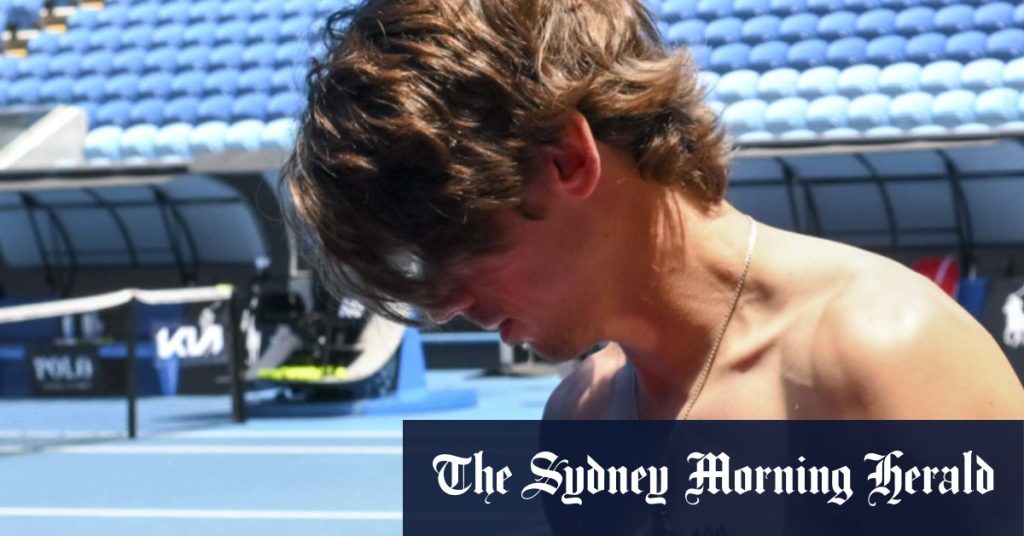The Australian Open, a prestigious tennis tournament, isn’t just about the sport; it’s also become a significant fashion and social event. This year’s tournament saw a mix of on-court drama, off-court antics, and a noticeable rise in the “tennis-core” aesthetic. A unique fantasy football league, involving players like Alex de Minaur and Cameron Norrie, added a humorous twist. Their poor performance triggered a penalty: either running a marathon, participating in a calendar photoshoot, or buying NFL jerseys for all league members. The photoshoot option, seemingly inspired by Stan Wawrinka’s striking ESPN The Magazine spread after his 2015 French Open victory, proved the chosen path, sparing the players a grueling 26.2 miles or a hefty jersey expense. This humorous wager underscores the camaraderie and lightheartedness often found among professional athletes.
Melbourne Lord Mayor Nick Reece experienced a night of mixed fortunes at the tournament’s exclusive “Set in Style” event. Seated with actress Rebel Wilson in Tennis Australia’s premium hospitality suite, “The O,” Reece found himself amid a star-studded gathering, including Dannii Minogue, Aaron Evans, Joel Creasey, and Peter Bol. However, the evening wasn’t without its awkward moments. Tennis Australia chair Jayne Hrdlicka mistakenly introduced Reece as “Nick Evans.” Reece corrected the error but then stumbled himself, misnaming tennis legend Judy Dalton as “Jane Dalton” and incorrectly attributing Kerry Melville Reid’s role in the “Original Nine” to Wendy Turnbull. These slip-ups, while minor, highlighted the pressure of public speaking, even in a celebratory setting.
The Australian Open’s growing emphasis on fashion was evident in the Ralph Lauren luxury suite. Celebrity stylist Lana Wilkinson, a long-time attendee, noted the evolution from casual attire to a more deliberate “tennis-core” sports-luxe style. This trend reflects a broader shift in how fans approach sporting events, viewing them as opportunities to showcase personal style. The blend of athletic wear and high fashion creates a unique aesthetic, comfortable yet chic.
Designer Pip Edwards, attending her fifth Australian Open, echoed Wilkinson’s observations. Melbourne’s sporting calendar, she noted, allows for a greater embrace of fashion, making it more accessible and inclusive than high-stakes events like the spring racing carnival. Edwards’ own “tomboy” style, a mix of men’s and women’s pieces, exemplified this trend. She praised the Australian Open’s inclusive atmosphere, where fans of all ages can engage with both the sport and the fashion. Her comment that Melbourne, not Sydney, is “the actual fashion capital,” underscores the city’s growing reputation as a hub for stylish sporting events.
The Australian Open’s increasing focus on fashion is a strategic move, broadening the tournament’s appeal and attracting a wider audience. This trend is not unique to tennis; other sports are also seeing a rise in fashion-conscious attendees. The convergence of sport and style creates a dynamic and engaging experience, attracting both die-hard fans and those interested in the social and fashion aspects of the event. This evolution reflects a changing landscape where sporting events are no longer solely about athletic competition but also about social interaction and self-expression.
The interwoven narratives of the fantasy football league’s humorous consequences, the Lord Mayor’s naming mishaps, and the rise of “tennis-core” fashion highlight the multifaceted nature of the Australian Open. It’s a stage for athletic prowess, a platform for social gatherings, and a showcase for evolving fashion trends. This blend of sport, style, and social interaction creates a vibrant and engaging atmosphere, solidifying the tournament’s position as a major event on the global sporting and social calendar. The Australian Open’s continued evolution ensures its relevance and appeal to a diverse audience, from sports enthusiasts to fashion aficionados.

